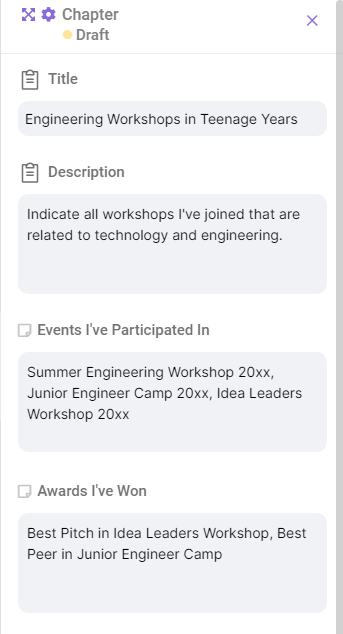Tips for Writing a Personal Statement

If you are a prospective college applicant, then you have most likely met the grand challenge of writing a personal statement. Personal statements are part of the requirements for many college applications, as a way for the university to know more about you beyond your grades. However, you will realize that things about you might not come as naturally as you’d like, and you might not be able to convey the proper ideas that will land you the admission.

Fret not, as we’re here to help you be able to write a great personal statement that is sure to convince the college admission team to accept you in their university!
Tips for Writing a Great Personal Statement
1. Brainstorm about yourself first.

It might seem weird to think about your life thus far, but personal statements need you to be a bit more specific. To start with, focus on things that you believe makes you unique and stand out from the rest. What makes you easy to distinguish among the sea of applicants vying for the attention of the university?
Another thing to include are interesting points in your life that became part of the domino effect leading to your application to the college of your choice. This might include your personal interests, certain pivotal events in your life, and influences that inspired you to pursue this field of study. Similar to a story plot, it should show that given these circumstances, it is almost natural that you continue upon your application.

An important thing to note about this tip is that you need to focus on your strengths while being honest. If you have encountered failures in life, make sure to emphasize the process of getting back on your feet rather than focusing on the failure itself.
At this point, you might also want to answer the questions that the university requires to be answered in your personal statement. If you can manage to weave your answer into the rest of your personal statement without making a stilted segment, that would be better.
To aid you in your brainstorming, you can make use of LivingWriter’s robust outlining tools in the Board. Although you may not be making an outline at this point, strictly speaking, LivingWriter’s tools are very flexible to accommodate any use case.

For example, you can divide your personal statement into time segments, such as your childhood and adolescence. Of course, you will have to break down the major events into chapters of their own. Since the Board supports drag-and-drop, you can drag each chapter to match your narrative later on.

One of the greatest features of LivingWriter’s Board is the fact that you can store exhaustive notes on each chapter, which you can view at any time on the right sidebar. This is infinitely helpful as you brainstorm your ideas, since you can just drop your ideas in your notes then have them right as you write your first draft, leading us to the next tip.
2. Start on a rough draft right away.
Note this initial draft does not have to be akin to a final personal statement. Rather, you want to see how the ideas you have brainstormed would sound once written down. At this point, you might start to weed out ideas that will not work out with the rest of your narrative.

If the university also demands a character or word limit on the essay, we recommend not to pay too much attention to it at this point. Again, you just want to write as much as your ideas let you. It’s better to prune words than clunkily adding facts to fluff the word counter.
3. Connect the story of your life to your major.
Although you should have already worked this out while brainstorming, you should make sure that your chosen field makes sense with your life experiences. This is crucial to convincing the university of accepting you into the program.
An important thing to note here is the experiences which would complement your passion in the field. Anecdotal involvements in the field you’re interested in would make your personal statement much more interesting.
4. Edit your work.
After finishing your initial draft, you should now scour through the piece. The first thing you want to check would be the technicalities, such as grammar and spelling. More than just knowing about you, the personal statement can be the university’s test to see your writing skills, and you don’t want a bad impression on that side.

You can also ask other people to look through your work and proofread it. Having worked on the piece for long might let some mistakes slip through your own eyes, so having a different pair of eyes to look through it would be excellent.
5. Read your piece out loud.

More than just a test of your writing skills, you should also make sure that your personal statement is, well, personal. It should sound like you, not a pretentious applicant who lies through their teeth to get the position.
A great way to spot unnatural parts of your statement is to read it out loud. Some things might look fine in writing, but are actually horrible once you’ve spoken it out loud. You can also use this tip to hyper-personalize some parts without sacrificing proper English rules. If some parts might sound more interesting written in a different way, it might be better written out that way.
6. Take your time.
Writing a personal statement, as with any written piece of literature out there, is best worked out without pressure. Let the ideas and the writing flow naturally, and don’t rush the process. Make time for both writing it and editing the piece, so that you can be confident that your personal statement is the best you have written.
A Personal Statement of You
Writing a personal statement can be a bit overwhelming, seeing that it might determine your admission to the college of your choice. However, as long as you follow our tips above, you can have less things to worry about. Of course, if you use LivingWriter in writing your personal statement, then you can be confident that the process will be as painless as it can be.
Try out LivingWriter today, the world’s best writing companion!